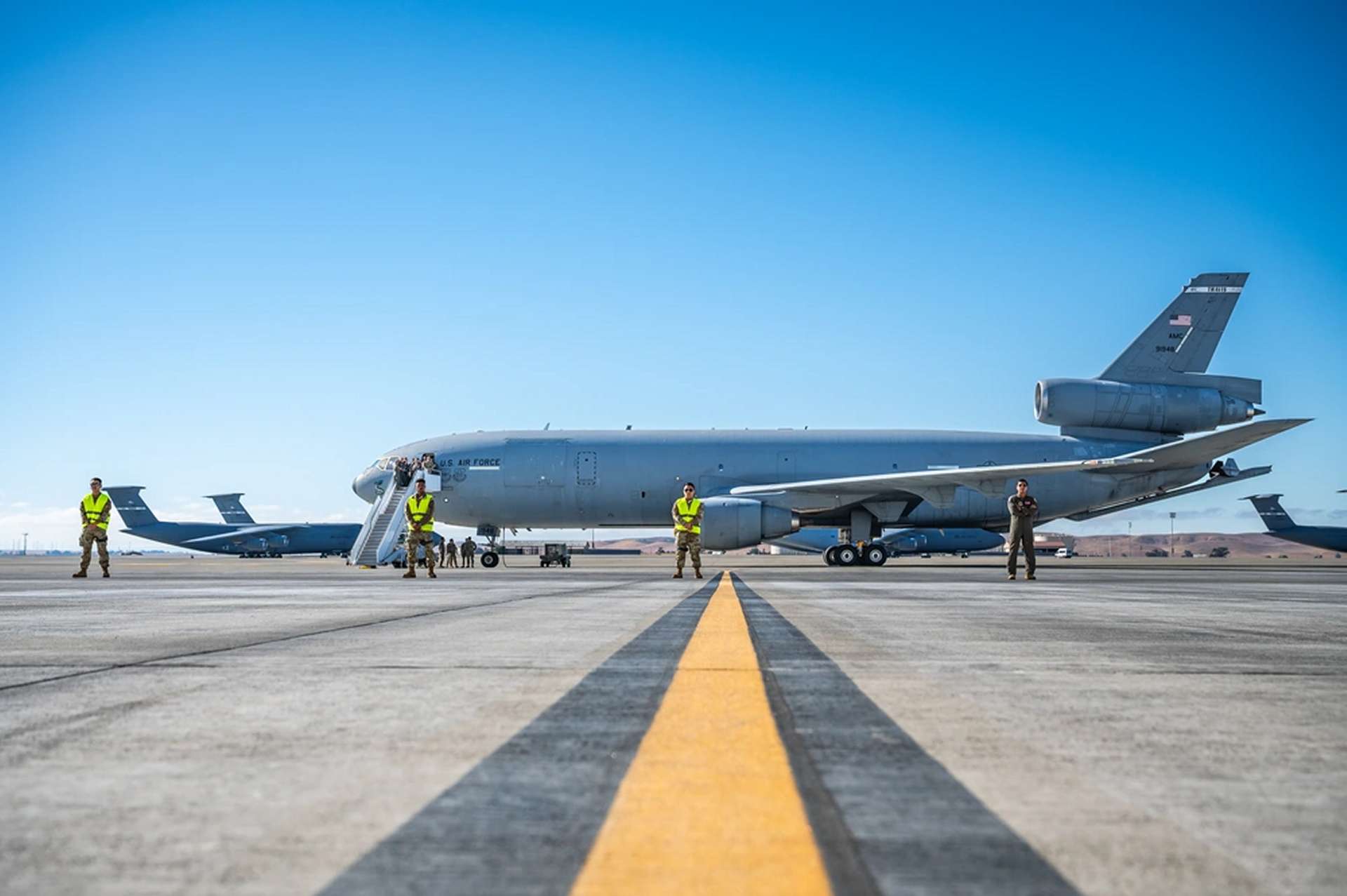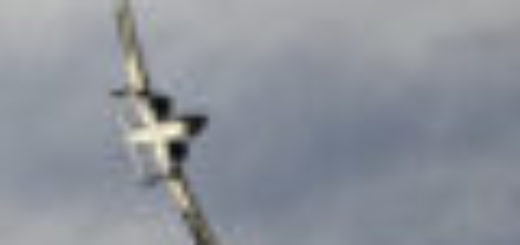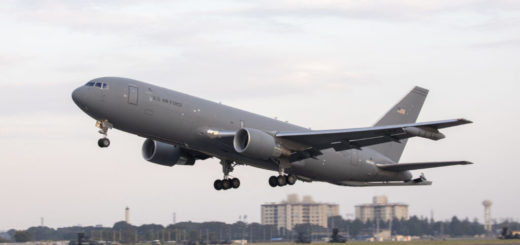US Air Force retires last KC-10 Extender tanker aircraft after 44 years of service

{loadposition bannertop}
{loadposition sidebarpub}
On September 26, 2024, a ceremony at Travis Air Force Base in California marked the decommissioning of the last U.S. Air Force KC-10 Extender after 44 years of service. The event was attended by military personnel, veterans, local community leaders, and base members. The KC-10, used primarily for air refueling operations, was formally retired in a ceremony led by Col. Jay Johnson, commander of the 60th Air Mobility Wing.Follow Army Recognition on Google News at this link
The KC-10 Extender was developed during the Advanced Tanker Cargo Aircraft Program following logistical challenges during the Vietnam War and the 1973 Yom Kippur War, which highlighted the need for long-range refueling and cargo support. (Picture source: US DoD)
The KC-10, based on the McDonnell Douglas DC-10, entered service in 1981 and supported various missions, including combat and humanitarian operations, as well as fostering partnerships with allied forces. It played a role in enabling the U.S. Air Force to conduct long-range air refueling operations globally. In a video message, Gen. David W. Allvin, Chief of Staff of the Air Force, noted the KC-10’s contribution to air refueling and its role in maintaining the U.S. military’s global reach. The aircraft served from its time in Strategic Air Command to its more recent operations.
The U.S. Air Force began retiring the KC-10 fleet in 2020, with the last aircraft completing its final mission on September 26, 2024, marking the end of the KC-10’s service. Following retirement, the KC-10 will be sent to the 309th Aerospace Maintenance and Regeneration Group at Davis-Monthan Air Force Base in Arizona. This facility is responsible for the storage, parts reclamation, and preservation of aircraft for the U.S. military, government agencies, and allied forces. The KC-10 will be replaced by the KC-46A Pegasus, with 88 of the new aircraft delivered by September 2024.
The McDonnell Douglas KC-10 Extender, a tanker and cargo aircraft, served the U.S. Air Force for over four decades. Developed from the civilian DC-10 airliner, the KC-10 expanded the Air Force’s refueling capabilities, supplementing the KC-135 Stratotanker fleet. The KC-10 was developed during the Advanced Tanker Cargo Aircraft Program following logistical challenges during the Vietnam War and the 1973 Yom Kippur War, which highlighted the need for long-range refueling and cargo support.
The US Air Force began retiring the KC-10 fleet in 2020, with the first KC-10 Extender ever produced arriving at Dover Air Force Base on April 26, 2022, for its retirement and display at the Air Mobility Command museum. (Picture source: US DoD)
A total of 60 KC-10s were produced between 1979 and 1987, and the aircraft entered service in March 1981. The Royal Netherlands Air Force (RNLAF) also operated two modified KDC-10s, converted from DC-10s. These tankers supported U.S. military operations worldwide, including missions such as the 1986 bombing of Libya, the Gulf War, and operations in Afghanistan and Iraq. The KC-10’s fuel and cargo capacities made it suitable for both refueling and strategic airlift missions.
The KC-10’s design included modifications for military use, such as additional fuel tanks that increased its capacity to 161,478 kilograms—nearly double that of the KC-135. The aircraft was equipped with both a boom-and-drogue refueling system, allowing it to refuel a range of aircraft, including those of the U.S. Navy, Marine Corps, and allied forces. The refueling boom, positioned at the rear, delivered fuel at a rate of 4,180 liters per minute. The KC-10 could carry up to 170,000 pounds (77,110 kilograms) of cargo, transporting 25 pallets and 16 passengers, or 17 pallets and 75 passengers over a range of 7,040 kilometers without needing to refuel.
The Royal Netherlands Air Force used KDC-10s for both refueling and transport missions, including humanitarian, peacekeeping, and military operations. These aircraft were eventually replaced by Airbus A330 MRTT tankers, and the remaining KDC-10s were sold to Omega Aerial Refueling Services, a civilian contractor that continues to operate similar aircraft.
As a reminder, the McDonnell Douglas KC-10 Extender is a three-engine aircraft with a length of 55.35 meters, a wingspan of 50.41 meters, and a height of 17.7 meters. It has a maximum takeoff weight of 267,619 kilograms. Powered by three General Electric F103 (GE CF6-50C2) turbofan engines, each providing 234 kilonewtons of thrust, the KC-10 reaches a top speed of 866 kilometers per hour (Mach 0.89) and has a range of 7,100 kilometers with passengers and cargo. It has a ferry range of 18,500 kilometers and operates at a service ceiling of 13,000 meters with a rate of climb of 34.9 meters per second.
Powered by three General Electric F103 (GE CF6-50C2) turbofan engines, each providing 234 kilonewtons of thrust, the KC-10 reaches a top speed of 866 kilometers per hour (Mach 0.89) and has a range of 7,100 kilometers with passengers and cargo. (Picture source: US DoD)

{loadposition bannertop}
{loadposition sidebarpub}
On September 26, 2024, a ceremony at Travis Air Force Base in California marked the decommissioning of the last U.S. Air Force KC-10 Extender after 44 years of service. The event was attended by military personnel, veterans, local community leaders, and base members. The KC-10, used primarily for air refueling operations, was formally retired in a ceremony led by Col. Jay Johnson, commander of the 60th Air Mobility Wing.
Follow Army Recognition on Google News at this link
The KC-10 Extender was developed during the Advanced Tanker Cargo Aircraft Program following logistical challenges during the Vietnam War and the 1973 Yom Kippur War, which highlighted the need for long-range refueling and cargo support. (Picture source: US DoD)
The KC-10, based on the McDonnell Douglas DC-10, entered service in 1981 and supported various missions, including combat and humanitarian operations, as well as fostering partnerships with allied forces. It played a role in enabling the U.S. Air Force to conduct long-range air refueling operations globally. In a video message, Gen. David W. Allvin, Chief of Staff of the Air Force, noted the KC-10’s contribution to air refueling and its role in maintaining the U.S. military’s global reach. The aircraft served from its time in Strategic Air Command to its more recent operations.
The U.S. Air Force began retiring the KC-10 fleet in 2020, with the last aircraft completing its final mission on September 26, 2024, marking the end of the KC-10’s service. Following retirement, the KC-10 will be sent to the 309th Aerospace Maintenance and Regeneration Group at Davis-Monthan Air Force Base in Arizona. This facility is responsible for the storage, parts reclamation, and preservation of aircraft for the U.S. military, government agencies, and allied forces. The KC-10 will be replaced by the KC-46A Pegasus, with 88 of the new aircraft delivered by September 2024.
The McDonnell Douglas KC-10 Extender, a tanker and cargo aircraft, served the U.S. Air Force for over four decades. Developed from the civilian DC-10 airliner, the KC-10 expanded the Air Force’s refueling capabilities, supplementing the KC-135 Stratotanker fleet. The KC-10 was developed during the Advanced Tanker Cargo Aircraft Program following logistical challenges during the Vietnam War and the 1973 Yom Kippur War, which highlighted the need for long-range refueling and cargo support.

The US Air Force began retiring the KC-10 fleet in 2020, with the first KC-10 Extender ever produced arriving at Dover Air Force Base on April 26, 2022, for its retirement and display at the Air Mobility Command museum. (Picture source: US DoD)
A total of 60 KC-10s were produced between 1979 and 1987, and the aircraft entered service in March 1981. The Royal Netherlands Air Force (RNLAF) also operated two modified KDC-10s, converted from DC-10s. These tankers supported U.S. military operations worldwide, including missions such as the 1986 bombing of Libya, the Gulf War, and operations in Afghanistan and Iraq. The KC-10’s fuel and cargo capacities made it suitable for both refueling and strategic airlift missions.
The KC-10’s design included modifications for military use, such as additional fuel tanks that increased its capacity to 161,478 kilograms—nearly double that of the KC-135. The aircraft was equipped with both a boom-and-drogue refueling system, allowing it to refuel a range of aircraft, including those of the U.S. Navy, Marine Corps, and allied forces. The refueling boom, positioned at the rear, delivered fuel at a rate of 4,180 liters per minute. The KC-10 could carry up to 170,000 pounds (77,110 kilograms) of cargo, transporting 25 pallets and 16 passengers, or 17 pallets and 75 passengers over a range of 7,040 kilometers without needing to refuel.
The Royal Netherlands Air Force used KDC-10s for both refueling and transport missions, including humanitarian, peacekeeping, and military operations. These aircraft were eventually replaced by Airbus A330 MRTT tankers, and the remaining KDC-10s were sold to Omega Aerial Refueling Services, a civilian contractor that continues to operate similar aircraft.
As a reminder, the McDonnell Douglas KC-10 Extender is a three-engine aircraft with a length of 55.35 meters, a wingspan of 50.41 meters, and a height of 17.7 meters. It has a maximum takeoff weight of 267,619 kilograms. Powered by three General Electric F103 (GE CF6-50C2) turbofan engines, each providing 234 kilonewtons of thrust, the KC-10 reaches a top speed of 866 kilometers per hour (Mach 0.89) and has a range of 7,100 kilometers with passengers and cargo. It has a ferry range of 18,500 kilometers and operates at a service ceiling of 13,000 meters with a rate of climb of 34.9 meters per second.

Powered by three General Electric F103 (GE CF6-50C2) turbofan engines, each providing 234 kilonewtons of thrust, the KC-10 reaches a top speed of 866 kilometers per hour (Mach 0.89) and has a range of 7,100 kilometers with passengers and cargo. (Picture source: US DoD)






